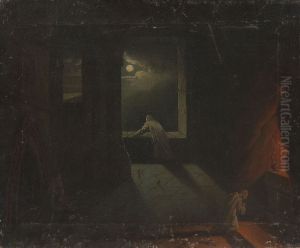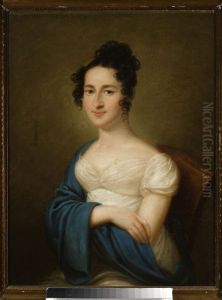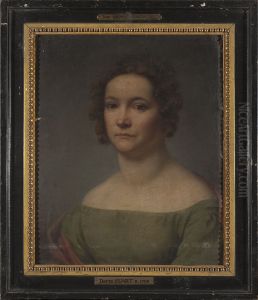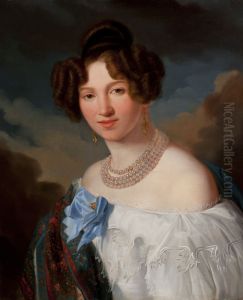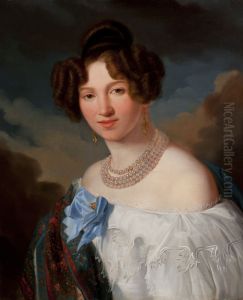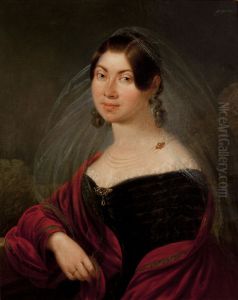Franciszek Ksawery Lampi Paintings
Franciszek Ksawery Lampi, born on February 14, 1782, in Romeno, Trentino, was a distinguished Polish portrait and historical painter, belonging to the notable Lampi family of artists that had a considerable influence on the art scene of their time. His father, Johann Baptist von Lampi the Elder, was an acclaimed painter, under whose guidance Franciszek initially studied, laying the foundation for his future accomplishments in the arts. The Lampi family moved to Lviv (then part of the Polish-Lithuanian Commonwealth, now Ukraine) in his early years, where Franciszek’s exposure to art and his development as an artist continued to flourish.
Lampi furthered his education and honed his skills abroad, notably in Vienna and Italy, which were pivotal in shaping his artistic style. His time in Vienna was particularly influential; the city’s vibrant art scene and the presence of his father, who had gained recognition there, provided him with an enriching environment for artistic growth. In Italy, Lampi was deeply influenced by the works of the Renaissance and Baroque periods, which is reflected in the classical themes and techniques evident in his later works.
Returning to Poland, Lampi established himself as a leading portrait artist among the Polish nobility and intellectual elite. His ability to capture the character and subtleties of his subjects’ personalities made him a favored choice. His portraits are characterized by their detailed realism, sophisticated use of light, and psychological depth, often imbued with a sense of nobility and grace. Beyond portraits, Lampi also engaged in creating historical and allegorical paintings, through which he expressed a romantic sensibility and a keen interest in Polish history and mythology.
Throughout his career, Lampi received numerous commissions from prominent figures of his time, which contributed to his reputation and success as an artist. His works were not only popular in Poland but also received recognition in the Austrian Empire and beyond. Despite the political turmoil and the partitions of Poland during his lifetime, Lampi’s art remained a significant part of Polish cultural heritage.
Franciszek Ksawery Lampi’s legacy is preserved in the collections of major museums in Poland and abroad, showcasing his contributions to the Polish Romantic period. He died on March 1, 1852, in Kraków, leaving behind a body of work that continues to be celebrated for its artistic merit and historical significance. Lampi's influence extended beyond his lifetime, contributing to the development of 19th-century Polish art and serving as an inspiration for future generations of artists.
